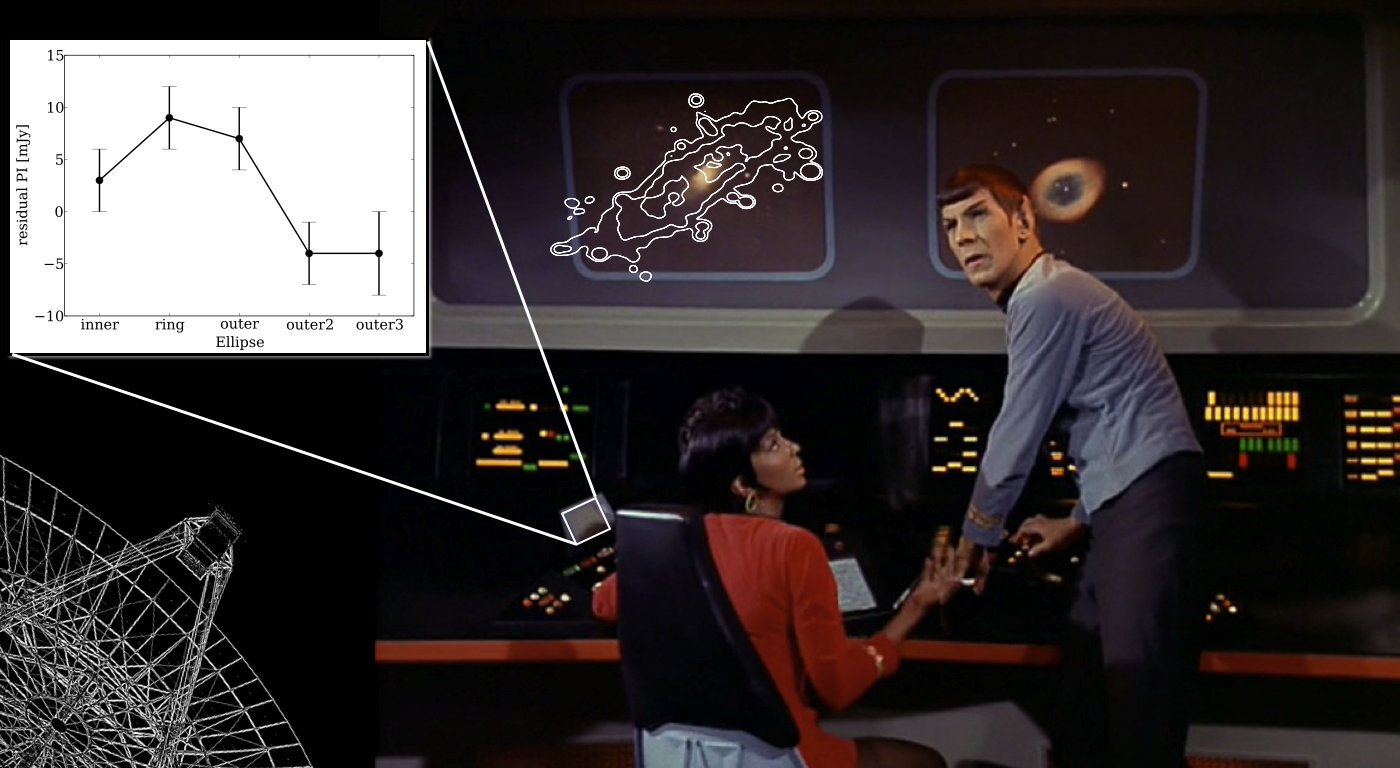Daily Image
11-10-2013To boldly detect polarization where none was known before...
| Submitter: | George Heald |
| Description: | The Andromeda Galaxy (M31) is so photogenic that it was once displayed prominently on the bridge of the Starship Enterprise. Recently, the WSRT was instrumental in discovering new properties of our sister galaxy. Polarization measurements at low radio frequencies are potentially a sensitive probe of weak magnetic fields in galaxies. However, because of strong depolarization effects, polarized radio emission has not previously been detected from nearby galaxies at frequencies below 1 GHz. M31 was recently observed In today's picture, the polarized emission is shown to be present only within the expected region of M31. The degree of polarization inferred from this new detection is only 0.21 +/- 0.05 %, consistent with extrapolation of internal depolarization from data at higher radio frequency. |
| Copyright: | Star Trek image copyright CBS Paramount Television |
| Tweet |  |
